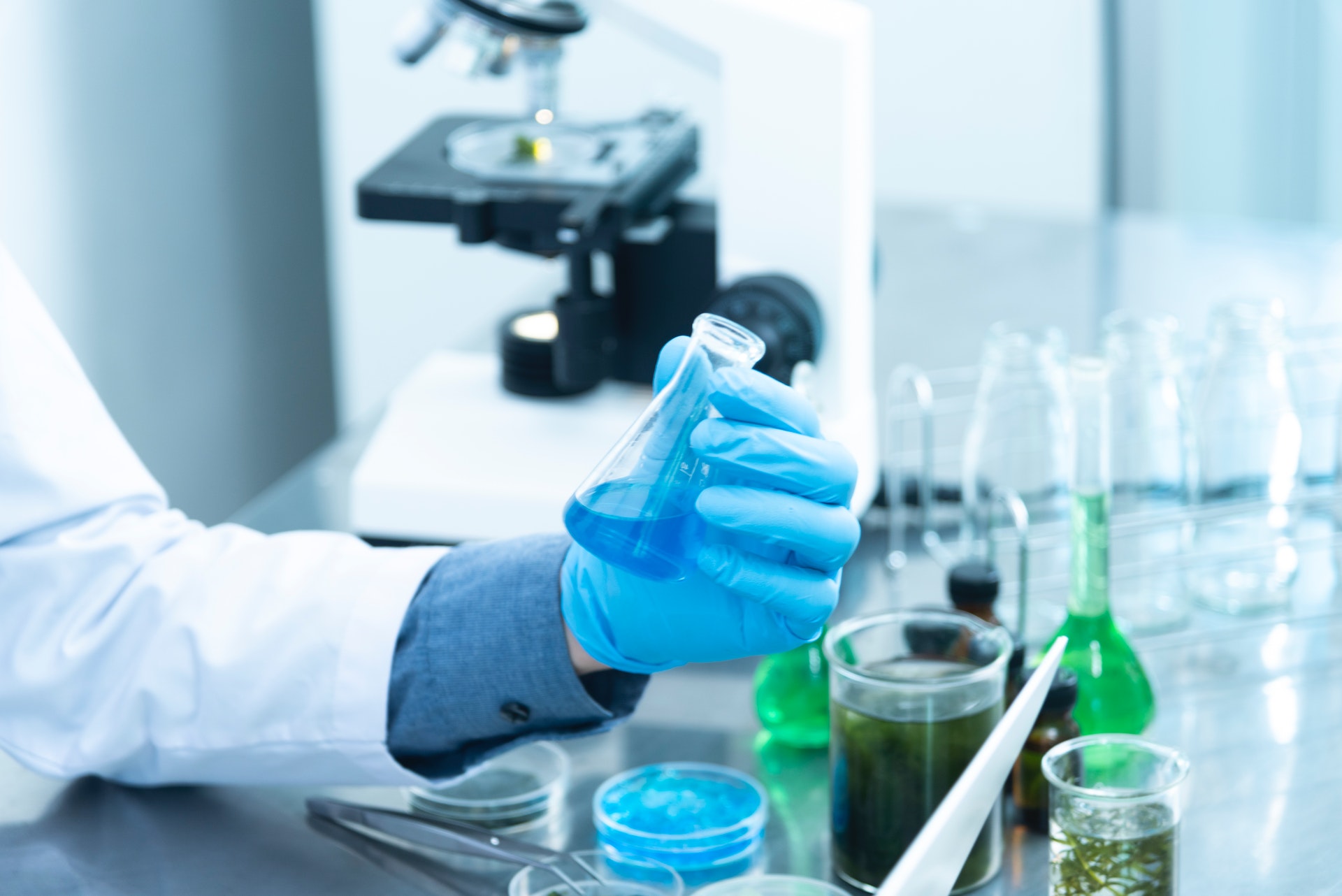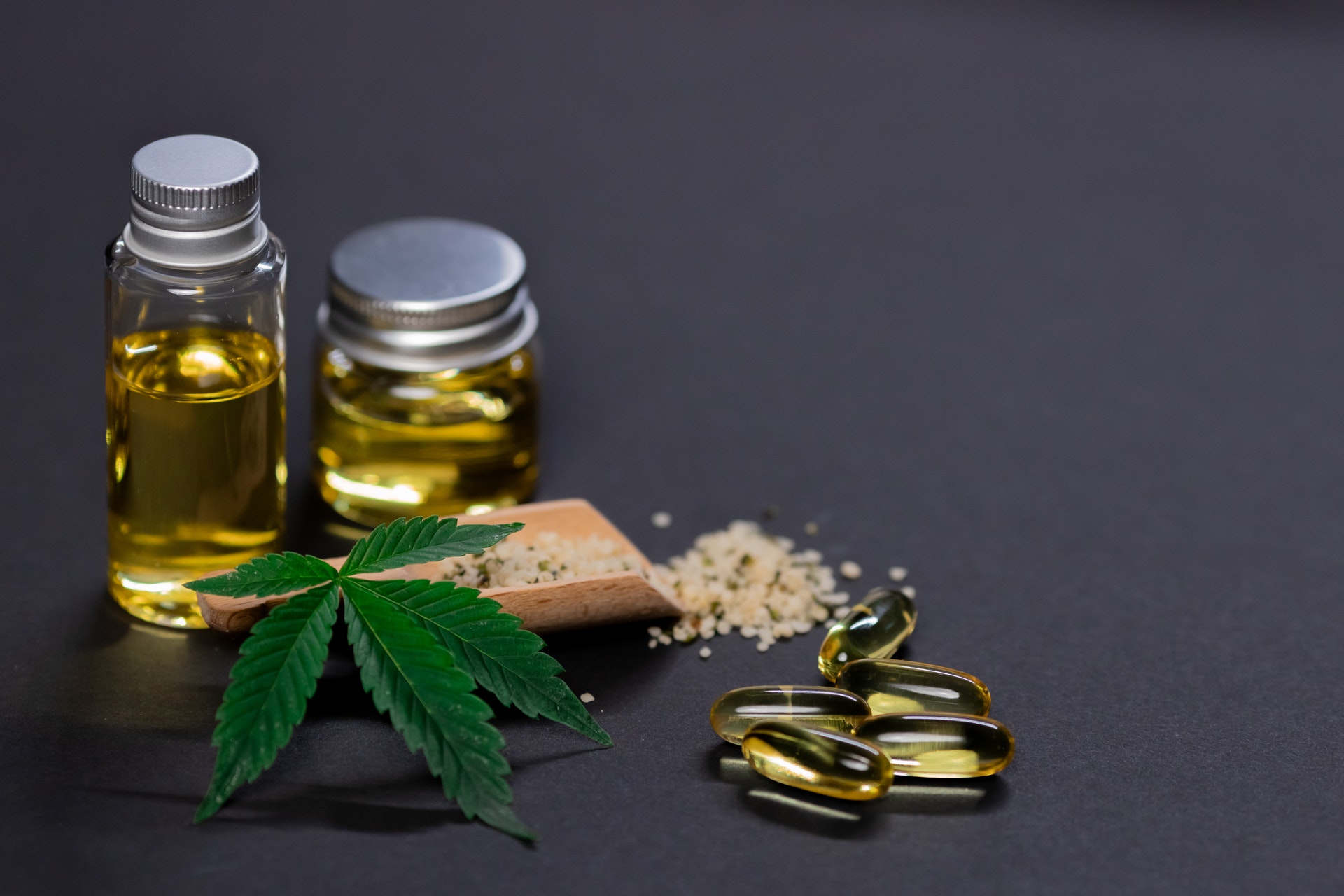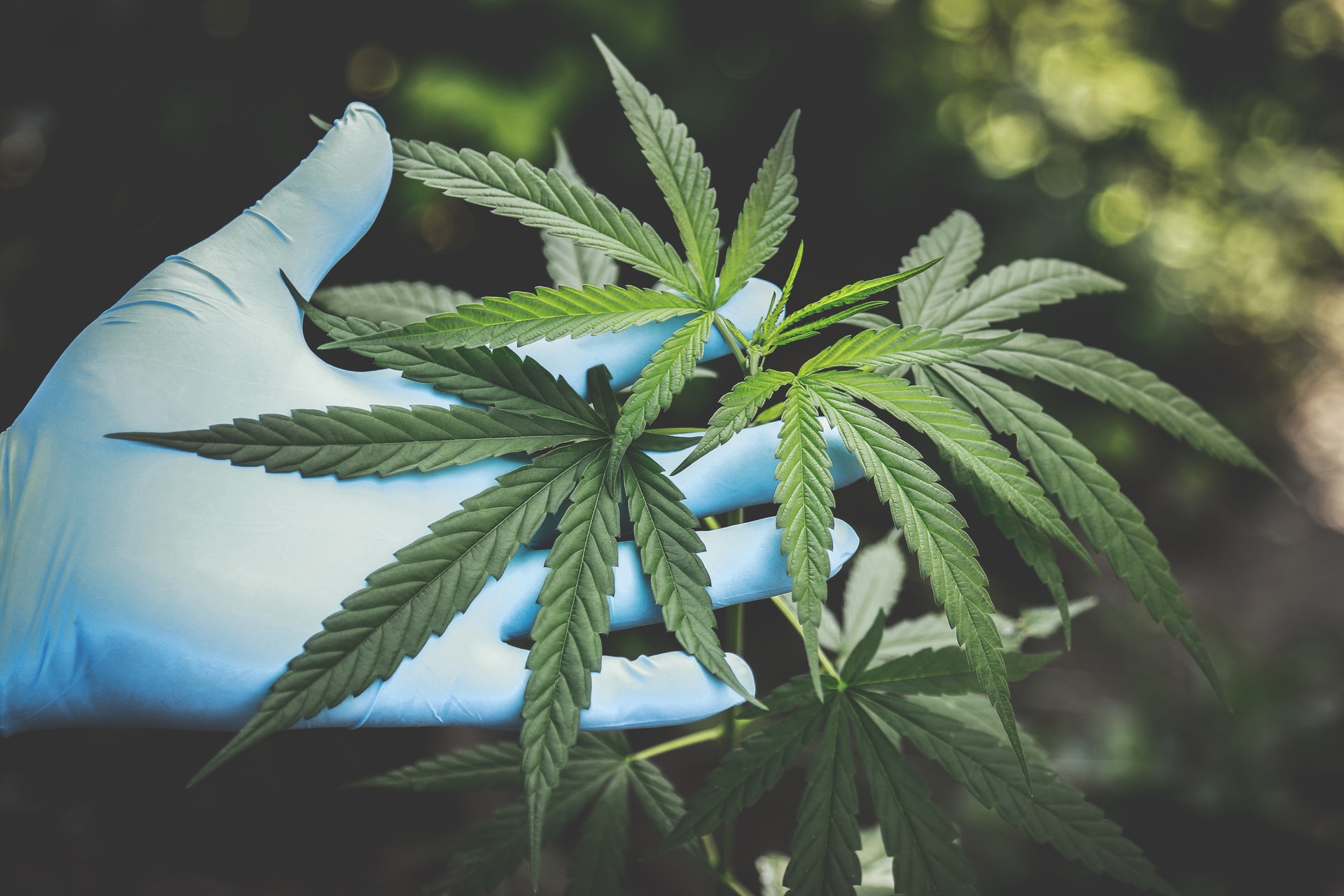Types of CBD – Guide Part 1

While cannabis is quickly becoming legal in new states and countries and is starting to be tolerated by the “mainstream,” there is still a lot of research to be done about its different properties and possible uses. As far as knowledge is concerned, we have only scratched the surface of power in the plants of the cannabinoid species, although scientists have been studying the effects of THC since the 1940s.
Let’s take a look at what we do know – and the different uses that phytocannabinoids are utilized for today. In this guide, we’ll take a look at how different compounds in cannabis affect our nervous system, how they work, and how they may be used to our benefit.
You can always check our Types of CBD – Guide Part 2 if you haven’t done it already!
What Are Phytocannabinoids?
You may have heard of phytochemicals – they are active substances found in plants. Herbs have a lot of phytochemicals – they can promote enzyme production and digestion, have an antiviral or antibacterial effect, or work as a sedative. On the other hand, some active chemical substances in plants may cause adverse reactions and be poisonous to humans or animals.
Phytocannabinoids are the phytochemicals found in plants of the Cannabis family – but aren’t limited to Cannabis only! In fact, there are cannabinoids that can be found mainly in the roots and flowers of the Echinacea plant. The pretty purple echinacea flower is widely used in homeopathy, natural supplements, and teas. First used by the American Plains Indians, it’s a popular and powerful way to treat colds, help boost immunity, and relieve pain.
So if other plants have phytocannabinoids, how do you define what makes up phytocannabinoids anyway? It’s not their presence in the plant itself but how they bind to certain receptors in our nervous system. Did you know that the human body can produce its’ own endocannabinoids and has special receptors just for them?
Phytocannabinoids are soluble in alcohol and in oils – which means that a tea made out of cannabis will probably not do you a lot of good. Plant parts extracted in alcohol or any type of oil will usually do better for both internal and external uses.
The Human Endocannabinoid System
The human nervous system produces neurotransmitters – they are chemical messengers that travel back and forth between your nerve cells – all with different functions and messages. If you try to imagine how they work, think about tiny little floating keys that only fit certain receptors. When they fit the receptors, they relay the message. It gets translated from the chemical form into an electric current, which travels up the synapses and repeats the process in order to enter other nerve cells. This is how you move your arms and legs, how your body releases hormones, and feels pain or pleasure.
Endocannabinoids are exactly those types of floating keys or neurotransmitters, and they are naturally formed in the body on an as-needed basis. They have a wide range of functions, and the human body wouldn’t do very well without them.
Endocannabinoids regulate:
- Sleep
- Mood
- Memory
- Appetite
- The Reproductive System
The endocannabinoid system was first discovered in the 1990s – which is pretty late, considering that research was done on compounds like CBD and THC since the 1940s.

What do Endocannabinoids have to do with Phytocannabinoids?
In straightforward terms, both Endocannabinoids (made by the body) and Phytocannabinoids (present in plants) have the same “key endings.” This means that Phytocannabinoids such as THC or CBD are able to have a working effect on your nervous system and be active compounds when they enter your body.
So far, scientists have isolated two Endocannabinoids:
- Anandamide (AEA)
- 2-arachidonoylglyerol (2-AG)
Types of Phytocannabinoids
Cannabis plants aren’t just THC and CBD. There are over 100 known Phytocannabinoids – and it’s likely that some of them still remain to be discovered. Let’s take a look at some of them – the ones we do know something about. First, let’s take a look at the different parts of the nervous system that different Phytocannabinoids can affect.
Central Nervous System
The central nervous system is the body’s central processing center. It’s made up of the brain and spinal cord – the core of the whole nervous system, which is responsible for thought, awareness, and thinking – as well as other functions like moving, tasting, smelling, and speech.
Peripheral Nervous System
The peripheral nervous system is just what it sounds like – it lies on the peripheries, or outside of the central nervous system. It carries signals between the command center of the central nervous system to the outlying areas like your arms, legs, and skin, but also to and from your organs. The two different states of this nervous system – the sympathetic and the parasympathetic control both the voluntary and the involuntary actions of your body. This means that the peripheral nervous system is responsible for the beating of your heart and breathing as well as the voluntary movements of your arms, legs, and other body parts.
CB1 Receptor – Cannabinoid Receptor 1
The CB1 receptors are found in the brain and throughout the whole body and are concentrated in organs like the liver.
CB2 Receptors – Cannabinoid Receptor 2
The CB2 receptors are found in the gastrointestinal system as well as in your immune system. Some are also found in the brain but they aren’t as common as the CB1 receptors.
These receptors are the receivers of both Phytocannabinoids and Endocannabinoids.
What is CBL?
Cannabicyclol, or CBL, is a Phytocannabinoid found in cannabis. It is a uniquely long-lasting compound – it’s been found in Cannabis that was discovered in China. The shaman’s grave in which the Cannabis was found was from around 2,700 years ago, and scientists were still able to isolate intact CBL.
This phytocompound isn’t produced in large quantities – in fact, it’s one of the biggest difficulties facing scientists who want to study this compound. This is what we do know:
CBL is not a psychoactive compound, and is not responsible for the type of high that can be derived from THC. Researchers believe that CBL might have health benefits. It was first isolated and mapped in the 1960s.
CBL is a derivative of another phytocannabinoid called cannabichromene. That means that CBL is produced when cannabichromene is broken down in the Cannabis plant, and the plant itself doesn’t plan an active role in constructing this compound. It forms when the Cannabis plant is exposed to light and UV radiation, or heat.
Generally, the older the plant is the higher its concentration of CBL. It’s because older plants have had longer exposure to light, heat, and UV radiation – whether cultivated indoors or outdoors.
What about its effects? The problem is, that as opposed to THC or CBS, CBL hasn’t been studied well, and its effects are virtually unknown. Some scientists hypothesize that it has a similar effect to CBD, but there have been no formal studies to confirm this theory.
The legal status of CBL is a little vague, although you can argue that any US farm bills that allow the sale of hemp include compounds like CBL, which is found in hemp plants with no naturally occurring THC.
What is CBNA?
CBNA, or Cannabinolic Acid, is another phytocannabinoid compound that is totally non-psychoactive. It is a building block for another phytocannabinoid called CBN, which is psychoactive, but only very mildly.
CBN is produced from CBNA through a process called decarboxylation – as the name suggests, it’s a process that removes carboxyl from the CBNA molecule, creating CBN. This process is usually used by people who make “edibles” – or use marijuana for other culinary purposes (with the goal of producing a high).
Scientists are now studying the properties of CBNA to increase appetite without producing a high in patients who have cancer, or eating disorders. They are also studying its effects on pain, insomnia, inflammation and seizure disorders.

What is CBDA?
CBDA is naturally produced by a cannabis plant and transforms into CBD – a more known Cannabinoid, which is almost as popular as THC, but more valued for its naturally calming and therapeutic values. CBD has been studied for decades, and more and more of its derivatives are being discovered every year.
CBDA transforms into CBD when exposed to heat – whether environmental heat, or heat applied after harvest. This process is described above as decarboxylation, and it is used to make different cannabinoids from larger molecules that are naturally produced by cannabis plants.
This process can occur naturally through the environment – this happens slowly and in an uncontrolled manner. It can also be done by applying direct heat (like through smoking) or carefully heating the plant in a controlled environment, where the result can be much more predictable.
CBDA was first discovered during a study of the therapeutic effects of CBD in 2008. The studies were conducted by the American Society of Pharmacology and Experimental Therapeutics Journal.
During these studies, it was discovered that CBDA has anti-inflammatory properties, much like CBD. More research is being conducted on CBDA’s effect on anxiety disorders. CBDA inhibits the Cox-2 enzyme, and mostly works with the peripheral nervous system.
What is CBDP?
CBDP is a phytocannabinoid otherwise known as cannabidiphorol – or more officially as (-) trans-CBDP. While it doesn’t produce a high, it is a neurotransmitter that affects the central nervous system, targeting opioid receptors. This might point to the conclusion that CBDP is psychoactive.
It’s a highly versatile neurotransmitter that binds to more receptor sites than CBD. Scientists are still studying all the potential effects of CBDP. One of the problems is that it’s not as prolific as other cannabinoids present in marijuana. It makes up about 1% of all cannabinoids present in the plant.
THC makes up around 15% of the cannabis plant, and CBD makes up around 20% – which is probably why they have been discovered early and studied more than the less prolific cannabinoids.
Cannabis plants have been altered over the years – just like a farmer will alter their crops and evolve them in order to make them bigger, more nutritious, and good looking, marijuana growers have increased the THC level from a mere 4% in the 80s to about 15% in the present.
This means that if other types of cannabinoids like CBDP are found to be meaningfully beneficial for certain health problems, strains of cannabis can be developed that are prolific in those specific compounds, creating specialized medical Marijuana strains.
Currently, CBDP is being researched for potentially having a role in combating breast cancer – it is too early for any conclusions, and scientists agree that this phytocannabinoid has been understudied and not understood. We’re happy to say that is slowly changing. As of today, CBDP is not considered a controlled substance.
What is CBGv?
CBGv is considered a minor cannabinoid, occurring in small amounts in most cannabis plants – although we’ve known about its existence since the 1970s, scientists weren’t able to study it much until now. This is because the questionable legal status and low funding made similar research unpopular and non-mainstream despite the potential health benefits. Now that things are changing, there is more well-funded research that is leading to breakthroughs.
CBGv and CBD come from a primary cannabinoid – CBG. With enough sunlight, UV radiation or heat, the process leads larger cannabinoids to break down and form new ones.
Cannabigerovarin (CBGv) is being studied for potential calming effects for people who experience high-stress levels or need more concentration. There are some questions as to the effects it might have on people with ADHD as it is considered a stimulant.
It affects both CB-1 and CB-2 receptors but it is not a psychoactive substance.
What is CBC?
CBC is part of the “big six.” These are the six most studied cannabinoids throughout history, and carry the most therapeutic promise (so far). CBGA is the precursor to THC and CBA in the plant’s system. As we have discussed before, the production of common cannabinoid compounds is a product of a complicated cascade effect that is begun by the plant material being exposed to heat.
CBGA is converted cannabichrome carbolic acid and then further exposure to heat or UV light converts it into CBC.
CBC binds to the receptors associated with the perception of pain and causes the body’s own endocannabinoid system to become activated and produce pain-blocking neurotransmitters. When researchers studied CBC, they agreed that it works in tandem with other cannabinoids, engaging in the entourage effect.
Researchers are studying CBC closely for the treatment of tumors – showing growth inhibition and reduction in inflammation in mice in numerous studies.
The entourage effect shows a promising potential of CBC’s role in the treatment of depression when combined with other cannabinoids like CBD.
Cosmetically, CBC also has been shown to have a topical effect on acne treatment and soothing inflammatory skin conditions.

The Cannabis Plant as a Whole
There is some research that suggests that different types of cannabinoids work better together – and not as isolated compounds. It is a holistic approach and a so-called “entourage effect” that is most effective and useful, and this has been suggested in a few theories.
What is the “entourage effect”? This phrase was first introduced in 1999, and suggests that the effect of the cannabinoids and terpenes present in Marijuana plants are best when working in tandem with all the other chemicals present in the plant – in other words, therapeutic effects might be part of a holistic effect, and can’t be effectively separated into hundreds of separate and taken separately for individual effects.
Right now, scientists are in an “I know that I don’t know” stage – and that is actually great news. It means that we realize that what we see is only the tip of the iceberg – and we’re ready to dive in and see how far down the possibilities go.
While some compounds occur in trace amounts in cannabis, their role in possible therapies and interaction with our nervous system should be carefully studied, as well as the group effect that happens when different types of CBD compounds interact with each other.

Cannabis Research Today
Research on cannabis has increased by leaps and bounds since the 1980s, as many countries and states have become more tolerant of marijuana use. It is at the forefront of new medical trends and research as it becomes more and more mainstream, and it doesn’t seem like that will stop any time soon, especially with the increasing number of different types of CBD products available on the market.
More studies and more clinical trials are needed, but we’re off to a great start. Current studies on cannabis include:
- Dietary supplement benefits
- MS research
- Possible pain and reduction of opioid use
- Interactions with morphine as a pain inhibitor
- Parkinson’s disease and motor functions
- Neuroinflammation
These are just some of the studies being done recently – all showing great promise and guaranteeing the future of CBD research in the future.
Over the past 20 years, the budget for CBD research has grown from about $30 million to over $130 million dollars in 2020 and is growing larger every year. This trend is only going to expand as both the therapeutic possibilities and economic potential are discovered within this multifaceted plant that has been ignored for way too long.
DISCLAIMER
The statements expressed on this website are purely opinion of the author and not factual. These statements have not been evaluated by the Food and Drug Administration. Any products referenced on this website are not intended to diagnose, treat, cure, or prevent any disease. It’s highly suggested to consult with your medical professional prior to any use of the products referenced on this website. This website and author specifically disclaim any liability in connection with the products contained on the website.
